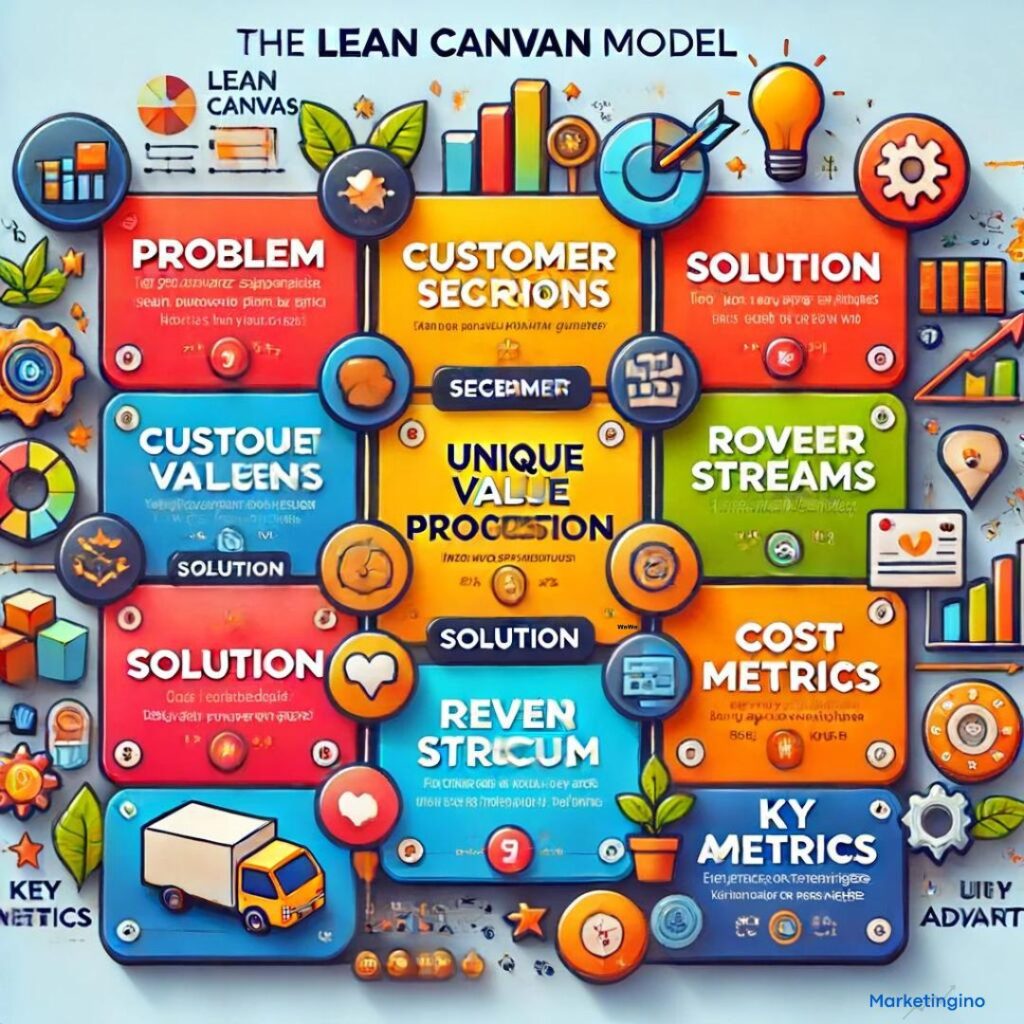The Lean Canvas is a strategic management tool designed to help entrepreneurs and business owners succinctly and effectively outline their business models. Created by Ash Maurya, it is a more startup-focused adaptation of the Business Model Canvas, emphasizing rapid prototyping and iterative learning. This article explores the history, components, benefits, and practical applications of the Lean Canvas in business planning.
History of Lean Canvas
Ash Maurya, an entrepreneur and author, introduced the Lean Canvas in his book “Running Lean” in 2010. Inspired by Alexander Osterwalder’s Business Model Canvas, Maurya sought to create a more straightforward and actionable tool for startups. The Lean Canvas emphasizes identifying and solving critical problems, understanding customer needs, and iterating quickly based on feedback.
Components of Lean Canvas
The Lean Canvas consists of nine key components, each designed to capture essential aspects of a business model:
- Problem: Identifies the top three problems the business aims to solve.
- Customer Segments: Defines the target audience and potential customers.
- Unique Value Proposition: Articulates the distinct benefit or value the business offers to its customers.
- Solution: Outlines the top three features or solutions that address the identified problems.
- Channels: Describes the pathways through which the business will reach and communicate with its customers.
- Revenue Streams: Specifies the ways the business will generate income.
- Cost Structure: Details the main costs associated with running the business.
- Key Metrics: Identifies the key performance indicators (KPIs) that will measure the business’s success.
- Unfair Advantage: Highlights any unique advantage that cannot be easily copied or replicated by competitors.
Benefits of Using Lean Canvas
- Simplicity and Clarity: The Lean Canvas condenses a comprehensive business plan into a single page, making it easier to understand and communicate.
- Focus on Critical Elements: By emphasizing problems, solutions, and customer segments, the Lean Canvas ensures that businesses focus on the most critical aspects of their model.
- Flexibility: The Lean Canvas encourages continuous iteration and adaptation, allowing businesses to pivot quickly based on feedback and market changes.
- Customer-Centric: By focusing on customer problems and needs, the Lean Canvas helps businesses develop solutions that are truly valuable to their target audience.
- Efficient Resource Allocation: Understanding key metrics and cost structures enables better decision-making regarding resource allocation and investment.
Practical Applications
The Lean Canvas is widely used across various stages of business development and industries:
- Startups: Entrepreneurs use the Lean Canvas to quickly validate their business ideas and identify potential pitfalls early in the development process.
- Product Development: Teams use the Lean Canvas to align on product features, customer needs, and market fit, ensuring that development efforts are focused and effective.
- Marketing Strategy: Marketing teams leverage the Lean Canvas to better understand their target audience, craft compelling value propositions, and choose the most effective channels for reaching customers.
- Business Workshops: Facilitators use the Lean Canvas in workshops and training sessions to teach business planning and innovation.
- Corporate Innovation: Established companies use the Lean Canvas to explore new business models and product lines, fostering a culture of continuous improvement and innovation.
Creating a Lean Canvas
Creating a Lean Canvas involves a few straightforward steps:
- Identify Problems: Start by listing the top three problems your business aims to solve.
- Define Customer Segments: Identify your target audience and potential customer segments.
- Craft Unique Value Proposition: Clearly articulate the unique benefit your business offers.
- Outline Solutions: List the top three features or solutions addressing the identified problems.
- Determine Channels: Specify the pathways to reach and communicate with your customers.
- Define Revenue Streams: Identify how your business will generate income.
- Describe Cost Structure: Detail the main costs involved in running your business.
- Identify Key Metrics: Determine the key metrics to measure success.
- Highlight Unfair Advantage: Note any unique, non-replicable advantages.
The Lean Canvas is a powerful tool for efficient business planning, offering a clear, concise, and actionable framework for developing and iterating business models. By focusing on critical problems, customer needs, and rapid iteration, the Lean Canvas helps entrepreneurs and businesses create value-driven solutions that meet market demands. Whether you’re a startup founder or part of an established company, incorporating the Lean Canvas into your planning process can significantly enhance your strategic approach and drive business success.




